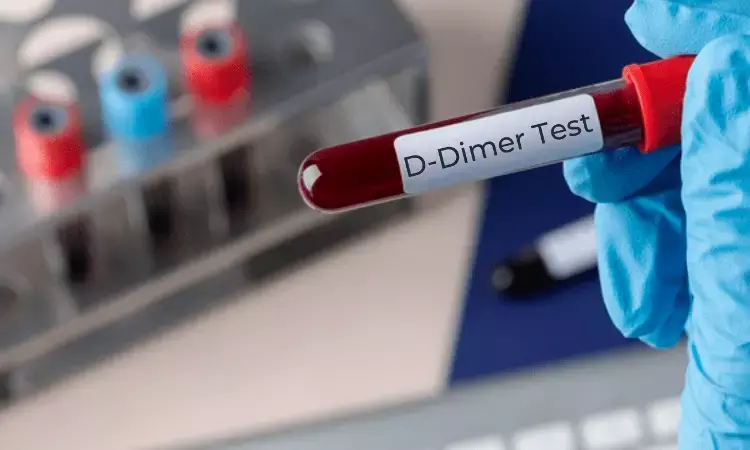- Home
- Medical news & Guidelines
- Anesthesiology
- Cardiology and CTVS
- Critical Care
- Dentistry
- Dermatology
- Diabetes and Endocrinology
- ENT
- Gastroenterology
- Medicine
- Nephrology
- Neurology
- Obstretics-Gynaecology
- Oncology
- Ophthalmology
- Orthopaedics
- Pediatrics-Neonatology
- Psychiatry
- Pulmonology
- Radiology
- Surgery
- Urology
- Laboratory Medicine
- Diet
- Nursing
- Paramedical
- Physiotherapy
- Health news
- Fact Check
- Bone Health Fact Check
- Brain Health Fact Check
- Cancer Related Fact Check
- Child Care Fact Check
- Dental and oral health fact check
- Diabetes and metabolic health fact check
- Diet and Nutrition Fact Check
- Eye and ENT Care Fact Check
- Fitness fact check
- Gut health fact check
- Heart health fact check
- Kidney health fact check
- Medical education fact check
- Men's health fact check
- Respiratory fact check
- Skin and hair care fact check
- Vaccine and Immunization fact check
- Women's health fact check
- AYUSH
- State News
- Andaman and Nicobar Islands
- Andhra Pradesh
- Arunachal Pradesh
- Assam
- Bihar
- Chandigarh
- Chattisgarh
- Dadra and Nagar Haveli
- Daman and Diu
- Delhi
- Goa
- Gujarat
- Haryana
- Himachal Pradesh
- Jammu & Kashmir
- Jharkhand
- Karnataka
- Kerala
- Ladakh
- Lakshadweep
- Madhya Pradesh
- Maharashtra
- Manipur
- Meghalaya
- Mizoram
- Nagaland
- Odisha
- Puducherry
- Punjab
- Rajasthan
- Sikkim
- Tamil Nadu
- Telangana
- Tripura
- Uttar Pradesh
- Uttrakhand
- West Bengal
- Medical Education
- Industry
Clinical Pretest Probability & D-dimer Combo Help Diagnose DVT Effectively

Clinical evaluation, D-dimer blood testing, and ultrasound imaging are widely used in the evaluation of suspected deep vein thrombosis (DVT) of the lower extremities. A recent study suggests that a diagnostic strategy using a combination of clinical pretest probability and D-dimer helps to identify patients at low risk for DVT. The study findings were published in the BMJ on February 15, 2022.
When DVT is suspected, diagnostic testing often starts with an assessment of clinical pretest probability. DVT is considered excluded if clinical pretest probability is low and the D-dimer test is negative. In a previous analysis, Dr Clive Kearon and her team showed that the use of pretest probability specific cut-off points for D-dimer excluded DVT in a greater proportion of patients than the use of a single cut-off point, without sacrificing negative predictive value. To further explore, the research team conducted and evaluated the safety and efficiency of a diagnostic algorithm for DVT that uses clinical pretest probability based D-dimer thresholds to exclude DVT.
In a prospective diagnostic management study, the researchers included 1508 patients with symptoms or signs of DVT. The researchers performed proximal ultrasound imaging in eligible patients. They restricted repeated proximal ultrasonography to patients with initially negative ultrasonography, low or moderate clinical pretest probability, and D-dimer >3000 ng/mL or high clinical pretest probability and D-dimer >1500 ng/mL. Patients did not receive anticoagulant treatment if DVT was not diagnosed. The major outcome assessed was symptomatic venous thromboembolism at three months.
Key findings of the study:
- Among 1508 patients who were enrolled and analysed, 173 (11.5%) had DVT on scheduled diagnostic testing.
- Of the 1275 patients with no proximal DVT on scheduled testing who did not receive anticoagulant treatment, the researchers found that eight (0.6%) had venous thromboembolism during follow-up.
- Compared with a traditional DVT testing strategy, they noted that this diagnostic approach reduced the need for ultrasonography from a mean of 1.36 scans/patient to 0.72 scans/patient (difference −0.64), corresponding to a relative reduction of 47%.
- They noted that using a D-dimer threshold of 1000 ng/mL in patients with low clinical probability and 500 ng/mL in those with moderate probability safely excluded DVT.
The authors concluded, "Our findings establish that using the 4D algorithm in the diagnosis of DVT is safe. Furthermore, application of our higher D-dimer cut-offs to determine the need for repeat proximal ultrasound imaging safely reduces the need for repeat ultrasound scanning."
They further added, "D-dimer thresholds of 1500 ng/mL and 3000 ng/mL could be used to determine the need for repeat proximal ultrasonography in patients with low/moderate and high probability".
For further information:
DOI: https://doi.org/10.1136/bmj-2021-067378
Medical Dialogues Bureau consists of a team of passionate medical/scientific writers, led by doctors and healthcare researchers. Our team efforts to bring you updated and timely news about the important happenings of the medical and healthcare sector. Our editorial team can be reached at editorial@medicaldialogues.in.
Dr Kamal Kant Kohli-MBBS, DTCD- a chest specialist with more than 30 years of practice and a flair for writing clinical articles, Dr Kamal Kant Kohli joined Medical Dialogues as a Chief Editor of Medical News. Besides writing articles, as an editor, he proofreads and verifies all the medical content published on Medical Dialogues including those coming from journals, studies,medical conferences,guidelines etc. Email: drkohli@medicaldialogues.in. Contact no. 011-43720751


